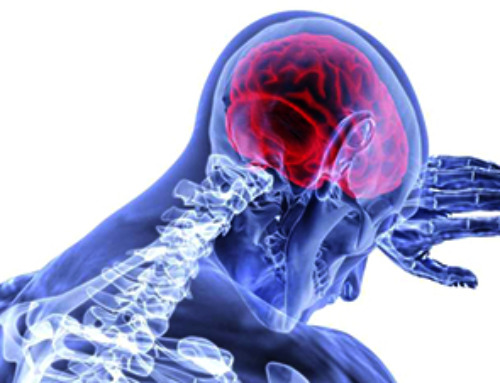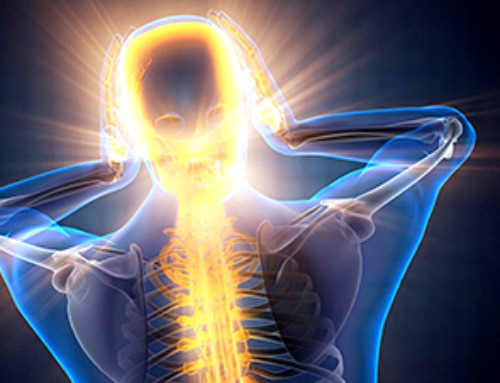Scientists reveal that short-term ozone inhalation doesn’t just harm the lungs; it reshapes the microbes in your mouth, with men facing the greatest risks.
Ozone is a toxic environmental pollutant with wide-ranging effects on the body. A new study in Environment & Health investigates the impact of ozone on the oral microbiome and lung function.
Introduction
Ozone is formed during the light-induced reactions of nitrogen oxides and volatile organic compounds. Ozone levels are rising worldwide, mainly from vehicle exhaust and industrial processes.
Ozone is a poison capable of causing respiratory, nervous, and cardiovascular damage. Its ill-effects may range from ischemic heart disease or chronic obstructive pulmonary disease (COPD) to Alzheimer’s disease (AD). The US Environmental Protection Agency (EPA) identifies ozone as a contributor to lung damage. In fact, each 10 ppb rise in ozone levels increases the risk of death from respiratory problems by 4% compared to other causes.
The lung and mouth share many common organisms due to their proximity and the fact that they both meet at the throat. The oral microbiome also shares multiple organisms with other body parts, from the brain to the heart. Changes in the oral microbiome are linked to lung diseases such as pneumonia, COPD, lung cancer and asthma, and even cystic fibrosis.
The oral cavity is among the first to encounter ozone in the environment. It eliminates ozone relatively slowly compared to the nose, making it more vulnerable to ozone effects. Therefore, ozone inhaled via the mouth penetrates the lungs more than nasally inhaled ozone.
About the study
The current study was a randomized controlled trial comparing ozone exposure to filtered air to uncover the effects and relationship of ozone exposure on lung function and the oral microbiome in healthy adults.
The study followed a randomized crossover design. In each arm, 29 individuals were randomly exposed to either filtered air or 280 ppb ozone for two hours. This concentration was chosen as it is close to the highest monthly average daily maximum 8-hour ozone concentration of 286 ppb in Beijing, China. However, the exposure is much shorter than would occur in real-world conditions.
Throughout the entire two-hour session, the participants had ten minutes of rest alternated with ten minutes of exercise (in the form of jumping jacks). The aim was to achieve a target average minute ventilation during exercise (VE) of 7-11 min/m2 body surface, ensuring uniform exposure for all participants.
Various lung function tests were performed after exposure: forced expiratory volume in one second (FEV1), forced vital capacity (FVC), and peak expiratory flow (PEF). Samples were collected at the same time for oral microbiome analysis. After two weeks, the groups were switched. The whole experiment was completed in one month.
The average age of the participants was 21.97 years, and their body mass index was 21.51 kg/m2 (within the normal range). There were 19 men and 10 women.
Study findings
When exposed to ozone, the measured ozone concentration in filtered air was stable at five parts per billion (ppb), vs 282 ppb.
Lung function
Following acute ozone exposure, lung function parameters declined immediately and observably. Forced vital capacity (FVC), which measures the maximal volume of air forcibly exhaled after full inhalation, fell by 12% (410 mL) on average.
The volume forcefully exhaled in one second (forced expiratory volume in one second, FEV1) also decreased by 360 mL, a 12% decline. The peak expiratory flow also dropped by 0.81 L/s (≈14%). Men accounted for the overall decrease, showing 14% to 17% reductions in FEV1, FVC, and PEF. In contrast, lung function in females remained unchanged. This could be due to sex-specific differences in inflammatory pathways potentially triggered by ozone.
Oral microbiome
Following ozone exposure, the oral microbiome became less diverse. Species richness, abundance, and chao indices fell by 21-22%.
Ozone appears to selectively suppress microbial diversity as shown by a marked decrease in species numbers. This is regardless of changes in the total species count or evenness of distribution.
Many of the affected species are linked to oral diseases, including dental caries, plaque, periodontitis, and squamous cell carcinoma. One, Haemophilus sputorum, is prominent in cases of lung inflammation and is commonly found in people with pus-producing infections of the nasopharynx.
The microbiome alterations appear to be driven by ozone-dependent changes in specific metabolic pathways involved in the biosynthesis and metabolism of multiple biomolecules. Importantly, the oral microbiome plays a role in responding to pollutants by breaking down harmful compounds. The changes seen here suggest that it contributes to the effects of ozone on human biology.
The changes in lung function were consistent with mediation by the microbe Treponema medium, which increased by ~96% in men and 135% in women. The study also found substantial changes in other microbes, with increases ranging from 55% to 80% and decreases from 30% to 36%, reflecting ozone’s disruptive influence on community structure.
Fewer species were affected in women than in men (7 vs 14, respectively). Treponema medium was the single species that showed consistent change with ozone exposure in both sexes. It might act as a sensitive marker of ozone-related lung function. These taxa and pathway findings are exploratory, as none survived false discovery rate correction, a statistical method used to reduce false positives when many comparisons are tested at once.
Conclusion
The study emphasizes the harmful effects of ozone exposure on the lungs and oral microbiome, especially in men. According to this analysis, changes in Treponema medium were consistent with a mediating role in the decreased lung function, which appears to be a sensitive indicator of ozone exposure. Men were more sensitive to ozone than females, showing poorer lung function and altered oral microbiome after exposure.
Journal reference:
- Zhou, H., Jiang, S., Zhang, L., et al. (2025). Impact of Ozone Exposure on Oral Microbiome: A Controlled, Randomized, Crossover Trial. Environmental & Health. doi: https://doi.org/10.1021/envhealth.5c00143. https://pubs.acs.org/doi/10.1021/envhealth.5c00143
News
Very low LDL-cholesterol correlates to fewer heart problems after stroke
Brigham and Women's Hospital's TIMI Study Group reports that in patients with prior ischemic stroke, very low achieved LDL-cholesterol correlated with fewer major adverse cardiovascular events and fewer recurrent strokes, without an apparent increase [...]
“Great Unified Microscope” Reveals Hidden Micro and Nano Worlds Inside Living Cells
University of Tokyo researchers have created a powerful new microscope that captures both forward- and back-scattered light at once, letting scientists see everything from large cell structures to tiny nanoscale particles in a single shot. Researchers [...]
Breakthrough Alzheimer’s Drug Has a Hidden Problem
Researchers in Japan found that although the Alzheimer’s drug lecanemab successfully removes amyloid plaques from the brain, it does not restore the brain’s waste-clearing system within the first few months of treatment. The study suggests that [...]
Concerning New Research Reveals Colon Cancer Is Skyrocketing in Adults Under 50
Colorectal cancer is striking younger adults at alarming rates, driven by lifestyle and genetic factors. Colorectal cancer (CRC) develops when abnormal cells grow uncontrollably in the colon or rectum, forming tumors that can eventually [...]
Scientists Discover a Natural, Non-Addictive Way To Block Pain That Could Replace Opioids
Scientists have discovered that the body can naturally dull pain through its own localized “benzodiazepine-like” peptides. A groundbreaking study led by a University of Leeds scientist has unveiled new insights into how the body manages pain, [...]
GLP-1 Drugs Like Ozempic Work, but New Research Reveals a Major Catch
Three new Cochrane reviews find evidence that GLP-1 drugs lead to clinically meaningful weight loss, though industry-funded studies raise concerns. Three new reviews from Cochrane have found that GLP-1 medications can lead to significant [...]
How a Palm-Sized Laser Could Change Medicine and Manufacturing
Researchers have developed an innovative and versatile system designed for a new generation of short-pulse lasers. Lasers that produce extremely short bursts of light are known for their remarkable precision, making them indispensable tools [...]
New nanoparticles stimulate the immune system to attack ovarian tumors
Cancer immunotherapy, which uses drugs that stimulate the body’s immune cells to attack tumors, is a promising approach to treating many types of cancer. However, it doesn’t work well for some tumors, including ovarian [...]
New Drug Kills Cancer 20,000x More Effectively With No Detectable Side Effects
By restructuring a common chemotherapy drug, scientists increased its potency by 20,000 times. In a significant step forward for cancer therapy, researchers at Northwestern University have redesigned the molecular structure of a well-known chemotherapy drug, greatly [...]
Lipid nanoparticles discovered that can deliver mRNA directly into heart muscle cells
Cardiovascular disease continues to be the leading cause of death worldwide. But advances in heart-failure therapeutics have stalled, largely due to the difficulty of delivering treatments at the cellular level. Now, a UC Berkeley-led [...]
The basic mechanisms of visual attention emerged over 500 million years ago, study suggests
The brain does not need its sophisticated cortex to interpret the visual world. A new study published in PLOS Biology demonstrates that a much older structure, the superior colliculus, contains the necessary circuitry to perform the [...]
AI Is Overheating. This New Technology Could Be the Fix
Engineers have developed a passive evaporative cooling membrane that dramatically improves heat removal for electronics and data centers Engineers at the University of California San Diego have created an innovative cooling system designed to greatly enhance [...]
New nanomedicine wipes out leukemia in animal study
In a promising advance for cancer treatment, Northwestern University scientists have re-engineered the molecular structure of a common chemotherapy drug, making it dramatically more soluble and effective and less toxic. In the new study, [...]
Mystery Solved: Scientists Find Cause for Unexplained, Deadly Diseases
A study reveals that a protein called RPA is essential for maintaining chromosome stability by stimulating telomerase. New findings from the University of Wisconsin-Madison suggest that problems with a key protein that helps preserve chromosome stability [...]
Nanotech Blocks Infection and Speed Up Chronic Wound Recovery
A new nanotech-based formulation using quercetin and omega-3 fatty acids shows promise in halting bacterial biofilms and boosting skin cell repair. Scientists have developed a nanotechnology-based treatment to fight bacterial biofilms in wound infections. The [...]
Researchers propose five key questions for effective adoption of AI in clinical practice
While Artificial Intelligence (AI) can be a powerful tool that physicians can use to help diagnose their patients and has great potential to improve accuracy, efficiency and patient safety, it has its drawbacks. It [...]





















